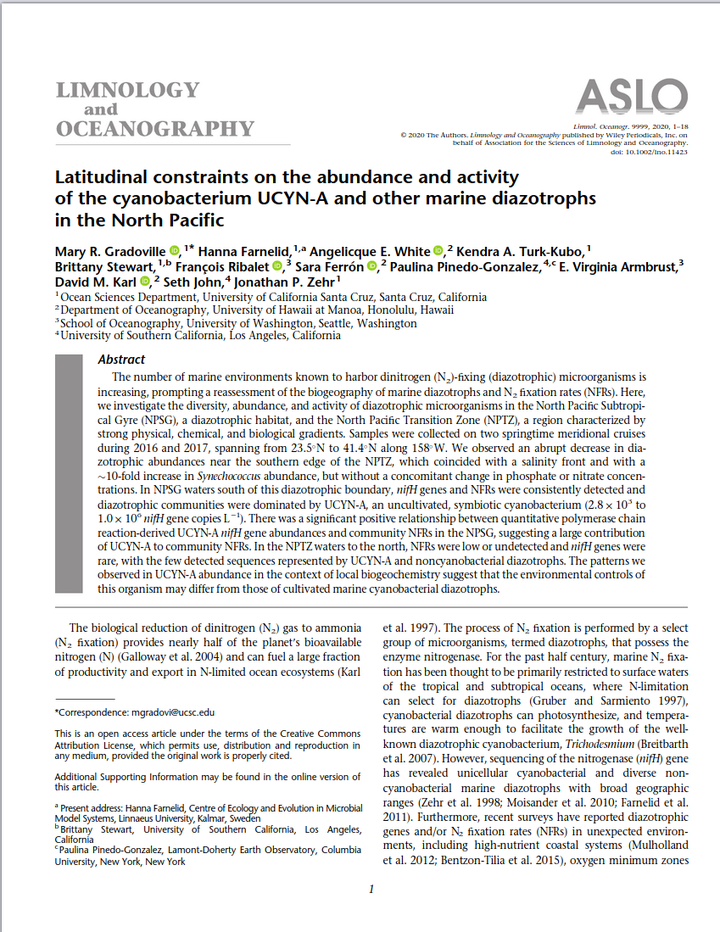Latitudinal constraints on the abundance and activity of the cyanobacterium UCYN-A and other marine diazotrophs in the North Pacific

Abstract
The number of marine environments known to harbor dinitrogen (N2)-fixing (diazotrophic) microorganisms is increasing, prompting a reassessment of the biogeography of marine diazotrophs and N2 fixation rates (NFRs). Here, we investigate the diversity, abundance, and activity of diazotrophic microorganisms in the North Pacific Subtropical Gyre (NPSG), a diazotrophic habitat, and the North Pacific Transition Zone (NPTZ), a region characterized by strong physical, chemical, and biological gradients. Samples were collected on two springtime meridional cruises during 2016 and 2017, spanning from 23.5°N to 41.4°N along 158°W. We observed an abrupt decrease in diazotrophic abundances near the southern edge of the NPTZ, which coincided with a salinity front and with a ∼10-fold increase in Synechococcus abundance, but without a concomitant change in phosphate or nitrate concentrations. In NPSG waters south of this diazotrophic boundary, nifH genes and NFRs were consistently detected and diazotrophic communities were dominated by UCYN-A, an uncultivated, symbiotic cyanobacterium (2.8 × 103 to 1.0 × 106 nifH gene copies L−1). There was a significant positive relationship between quantitative polymerase chain reaction-derived UCYN-A nifH gene abundances and community NFRs in the NPSG, suggesting a large contribution of UCYN-A to community NFRs. In the NPTZ waters to the north, NFRs were low or undetected and nifH genes were rare, with the few detected sequences represented by UCYN-A and noncyanobacterial diazotrophs. The patterns we observed in UCYN-A abundance in the context of local biogeochemistry suggest that the environmental controls of this organism may differ from those of cultivated marine cyanobacterial diazotrophs.